On March 11, 2019, I started a 90-day challenge to make at least $1000 starting with no money. If you’re interested, you can go back and read my first post about it here.
To get things started, I had to pick 5 items I already owned and sell them for the cash I needed to start buying more inventory.
This post is going to be a recap of my entire flipping challenge. I’ll cover the strategies I used to find and sell used items profitably, plus how much money I eventually made.
If you are interested in learning how to flip used items for profit, this post will give you an idea of what to do and how to get started. If you want a more detailed guide, check out Ryan’s Flipping For Profit course.
I’m hoping the results I’ve enjoyed are inspiring enough to get you to try something similar, especially if a lack of money has prevented you from starting your own business.
The Results
Let’s start with the most important detail, which is how much I was able to make by the end of my 90 days.
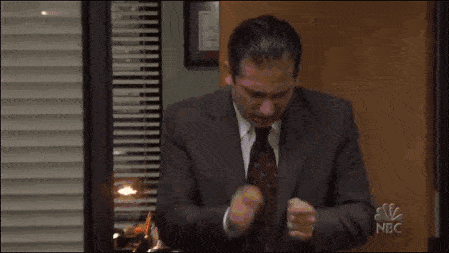
$2457.90, plus another $500 or so in additional inventory that didn’t sell before the end of the challenge.
While there were many mistakes made along the way, I have to say that I am extremely happy with that amount.
I started with 5 items that I didn’t want anymore and turned those items into over $2400 in cash and nearly $3000 in cash + inventory. That number may or may not seem big to you, but either way one of the key things to remember is that it will continue to be reinvested and produce increasingly larger amounts of money in the process.
If you follow Ryan’s system or have read anything about it, you know that he is big on starting small and achieving big results through the power of reinvestment. Of all the lessons in his Flipping For Profit course, the ones on reinvesting and speed were by far the most enlightening for me.
But we’ll get back to that in a minute. First, let’s go over my flipping challenge and how you can do it as well.
Starting The Flipping Challenge
As I mentioned above, the official flipping challenge set up has you start with $0. In order to do that, you pick 5 items that you already own and sell them on either Craigslist or Facebook Marketplace. The cash you get from those sales is then reinvested into more inventory, and you keep repeating from there.
To get you started on the right path, the “official” rules of the challenge include the following stipulations on the first 5 items you pick:
- The combined value of the items should be at least $100.
- You have to estimate the value of each item on your own.
- The items need to be in different categories.
With all this being said, you could choose to start your flipping challenge however you want. You could set aside $100 to start investing, you could pick 20 items to sell that you already own, or anything else that gets you started.
However you decide to start, I highly recommend enrolling in Flipping For Profit. It’s a text-based course that Ryan put together, and it was extremely helpful throughout my challenge.

The five items that I ended up settling on were:
- A 63” plasma TV from 2011 that didn’t work right
- A lightweight plastic bed frame for a queen bed
- An 18-speed purple bicycle
- A double stroller
- A pair of brown Chaco sandals, size 12
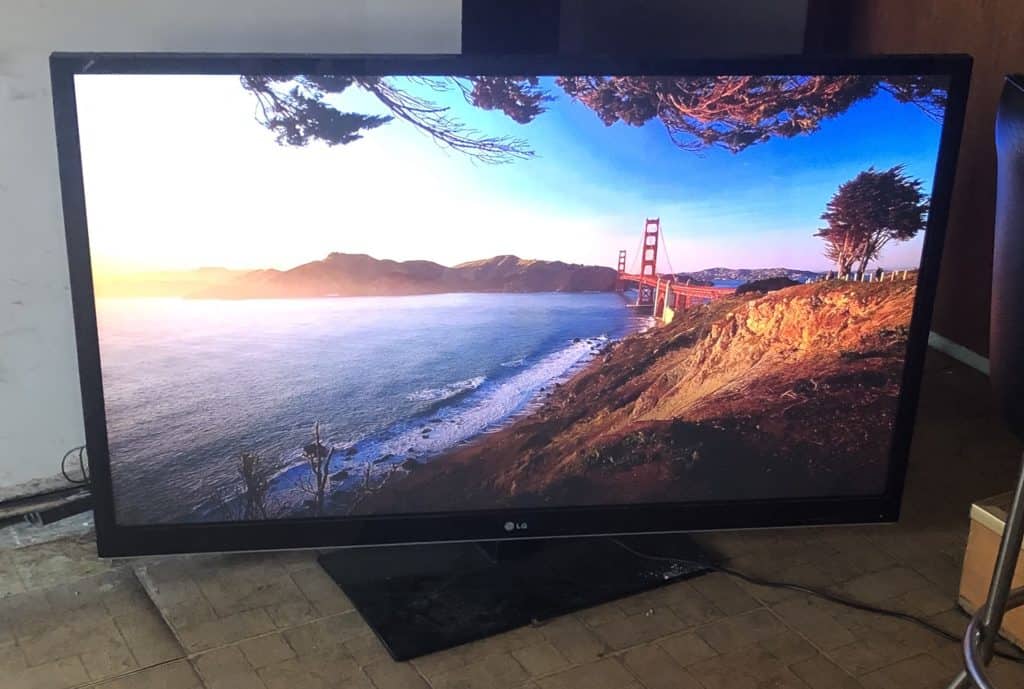
I picked these on the first day of my challenge and listed them on Craigslist right away. 4 of the 5 sold in the first week, with the bicycle taking quite a while longer to sell. I originally planned on selling on both Craigslist and Facebook Marketplace, but I don’t use Facebook much and was never approved for using Marketplace.
You likely won’t have that issue, which is good news because Ryan had great success on Facebook Marketplace during his own flipping challenge, which you can read about here.
But Craigslist worked great for me, and within 5 days I had $160 in cash to reinvest into more products.
How to Profitably Buy and Sell Used Items
Once you get that first step out of the way, the rest of your challenge will be spent buying and selling as much and as often as possible. Here are some of the main things I learned along the way…
The Best Items to Flip
One of the biggest things I’ve learned is that there really isn’t a list of “best items to flip” that you can download and go look for at thrift stores.
The best items to flip are any that you can buy low and sell high, which can be pretty much anything. During this challenge, I flipped all of the following:
- Motorized equipment (tractor and a jet ski)
- A grill
- Pool steps
- Bird feeders
- Binoculars
- Recliners
- Gas cans
- A kitchen island
- A trolley decanter that played music
None of these things would make a list of the best items to flip, but I got them at good prices and was able to sell them profitably. So the best item for you to flip is situational. It doesn’t matter if you find a rare video game if the sellers are asking it’s full worth, for example.
This is something that Ryan also talked about in his recap, and is a good lesson to keep in mind.
Tip 1: Look for good deals, double check what any item you want to buy is worth before making an offer, and learn from any mistakes you make.
The Importance of Timeliness
Earlier I mentioned how I found a lesson on speed in the Flipping For Profit course extremely valuable. While it may seem like common sense, I don’t think most people really appreciate how important timeliness plays in your overall success and profitability in an endeavor like this.
One of things Ryan discusses is your capital turnover rate. The basic idea is that the amount you make directly correlates to how quickly your turn money into inventory and back into money again. Anything that makes this process take longer – which includes waiting a couple days to get an item listed, waiting to reinvest your money, or holding out on selling an item until you get a better offer – means your capital turnover rate will be worse.
I’m sharing all this now because it was something I continually struggled with during my challenge. I would often pass up buying items I knew I could make money on just in case I found something better to buy later, which ultimately meant that my money spent too much time sitting there as cash.
Ultimately you can only invest as much time as you have available, and even a few hours a week is better than nothing at all. But in my experience, I frequently found myself putting things off for the future even though I really could have gotten it done right away.
Tip 2: If you are really serious about doing this or starting a business in general, I recommend taking a good look at how you currently spend your time and set some goals regarding what you will do less of in order to make the time needed to be successful. Things like less TV and internet browsing are probably the biggest areas that most people can make up time that would be more productively spent working on your business.
100% Reinvestment
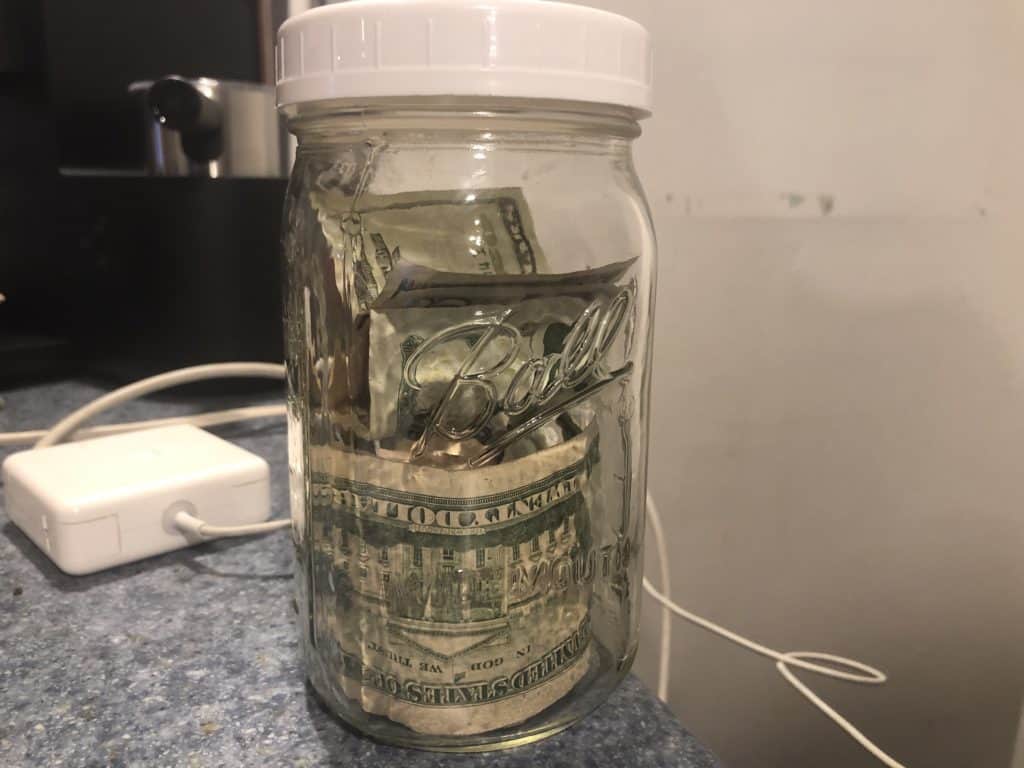
The other thing I really took to heart that Ryan recommends is 100% reinvestment. This is arguably even more important than the speed lesson.
Of all the things Ryan teaches, 100% reinvestment is probably the number one reason his system works so well. Anyone can be successful if they are willing to start small and not touch the money.
This is because your returns compound over time. The more money you have to reinvest, the more money you will make. Taking out money to spend on non-business purposes – basically anything that won’t make you more money – means that your earnings potential is lower.
If you have enrolled in Flipping For Profit or plan to in the future, make sure you take a look at the graphs that show your earnings potential when you reinvest 100% compared to other scenarios were you spend some of the money. They are very eye opening.
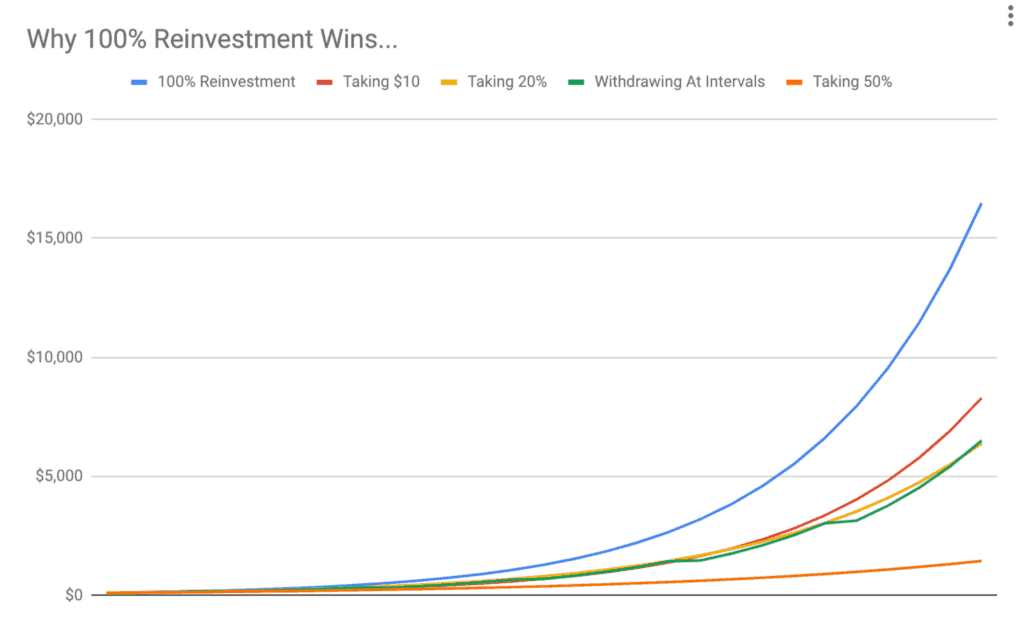
Tip 3: Don’t plan on using the money you make until your business is well established. The longer you wait to start paying yourself, the faster your business will grow and the better off you’ll be.
My Most Profitable Flips
By the end of the challenge, I sold about 68 items (and bought more than that). I say about 68 because some of the “items” were actually several things sold at a single time, like a collection of records.
I’m not going to go through all of them here, but I will list my five most profitable items:
- John Deere tractor* = +$545
- Kawasaki Jet Ski = +$525
- Pool Stairs = +$250
- Chicken Coop = +$125
- Weber Grill and accessories = +$75
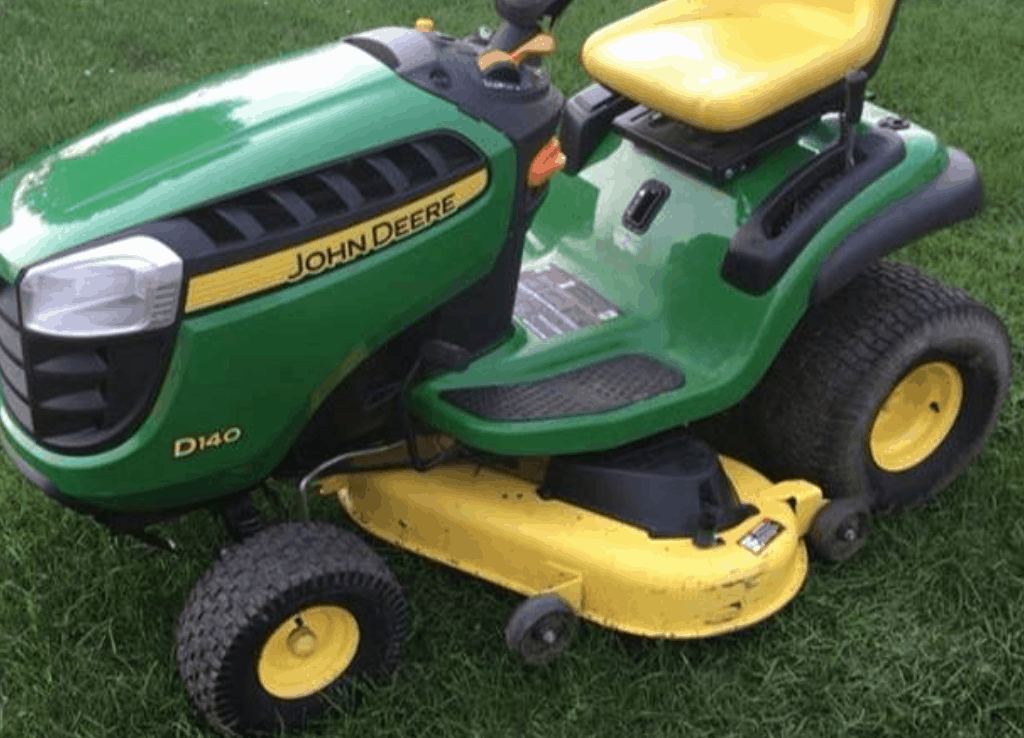
As you can see, I made over $1000 of my profit on two items alone. Towards the end of my challenge I was focusing on high dollar flips because of their potential to generate a large total return in a shorter amount of time.
It takes just as much time to list and sell a $5 item as a $2000 jet ski, and while the $5 may generate a 200% ROI, I’ll take the 25% ROI on the Jet Ski every time.
Where I Had The Most Success
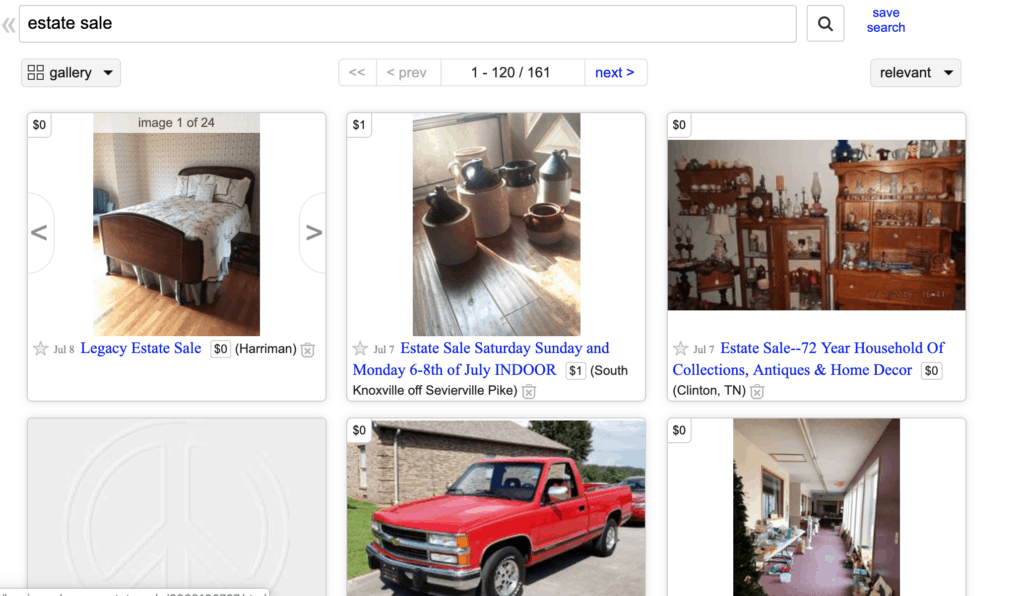
The vast majority of my inventory came from estate and moving sales, and other sales of this nature. My specialty, if you can call it that, was getting items at the end of the sales.
Pretty early on in the challenge I learned that a rather large amount of the items at these sales don’t end up selling, and that leaves the “hosts” of the sales in a bit of a bind. In many cases, the items left over are simply donated in order to get rid of them because these sales are happening in order to clear out a house to get it ready to be sold.
That means that you can get really good deals, especially if you buy big items or bundle a bunch of items into one deal.
For the record, I obtained both the tractor and the jet ski in this manner.
That doesn’t mean you should run out and focus on just this type of sale though. There are all kinds of variables that factor into where you will find the most success, and in the beginning, you should aim to try sourcing at as many different types of stores and sales as possible.
This is advice that Ryan gives, and I’m glad that I followed it. I wouldn’t have even considered these sales had it not been for that lesson.
And along these lines, Ryan enjoyed most of his success from thrift stores in his challenge.
What Should You Do With The Money?
Once you “finish” your flipping challenge, you are really only getting started with the bigger goal of building a successful business.
You may make more or less than what I made, but no matter how much you make, you should plan on continuing to reinvest it. If you are enjoying buying and selling used items, then you can keep on doing and building up your capital.
Another option is to take the next step in Ryan’s Stairway to Seven Figures and add retail arbitrage and even wholesale as sourcing strategies. If you haven’t read about the Stairway to Seven Figures yet, you can start learning about it here.
I haven’t made any major decisions about how I will proceed yet, I’ve just been continuing to flip used items and building up the money I have on hand.
Since I don’t need this money for anything in the present, my plan is to keep reinvesting it and not touch it for at least another year.
If there is any interest, I can post an update in the future about what I’m able to turn the money I’ve made so far into. Let me know in the comments if you’d like to see an update post like that, or if you have any questions about my challenge that I didn’t cover in this post.

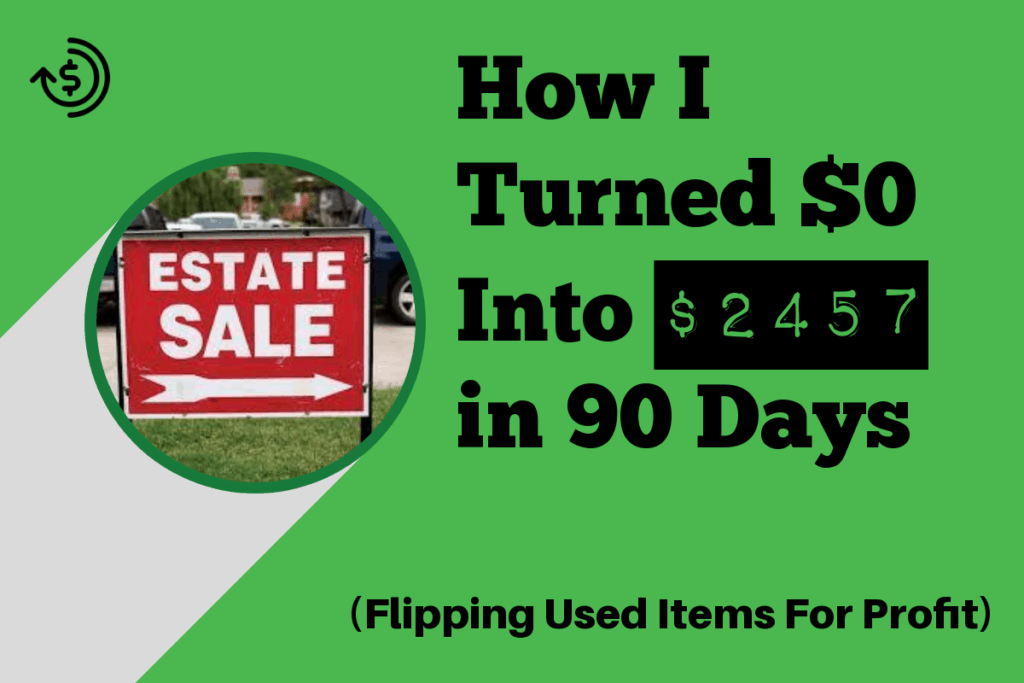
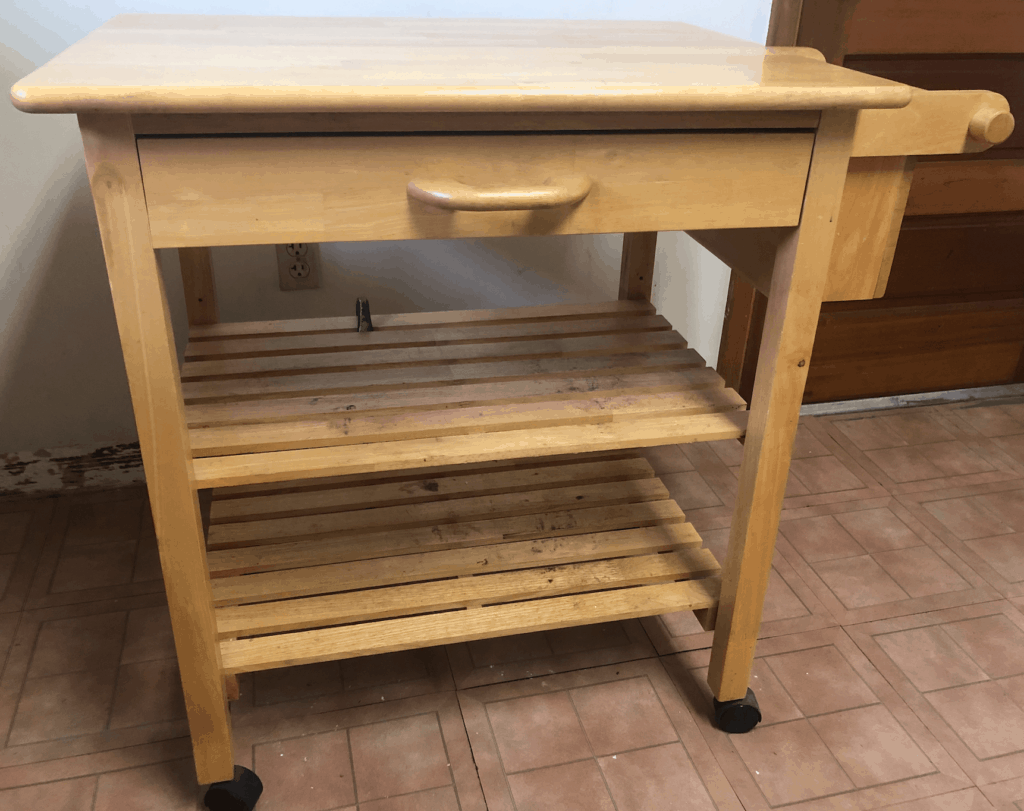

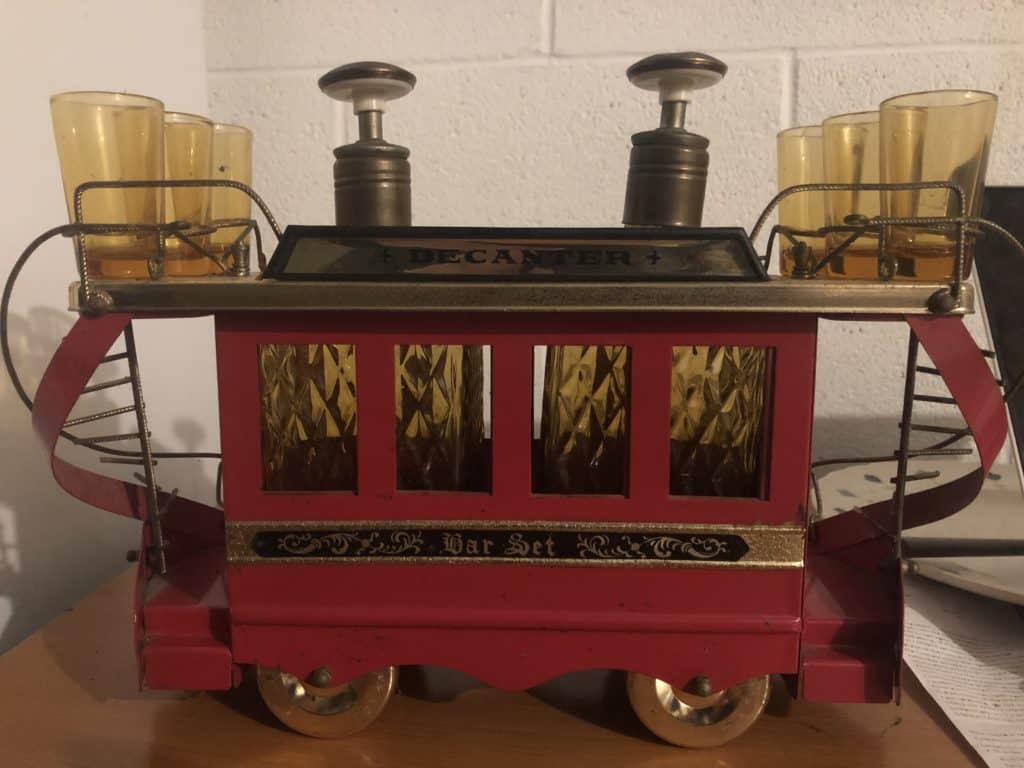
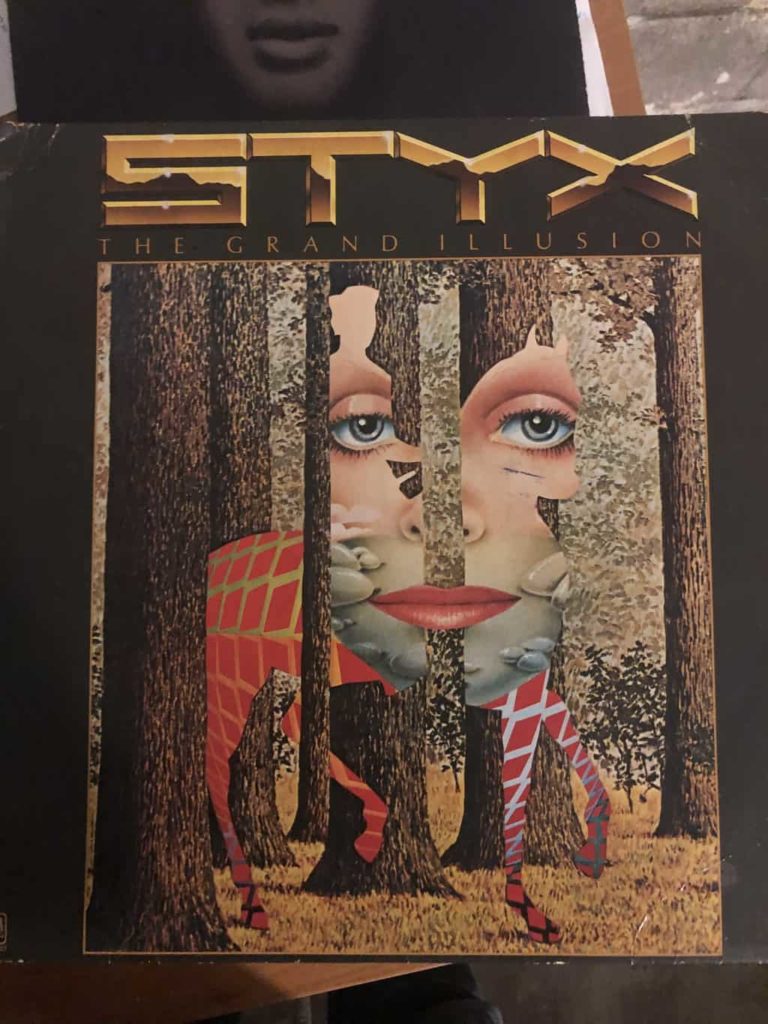
I just found this article and have never heard of arbitrage. I’ve tried flipping thrift store things with no luck, but I have made a little cash on things I have found while dumpster diving behind retail stores (really!). My question is, what if I’m needing to do this to help pay for our mortgage, bills, e.t.c? How much should we be reinvesting if we need the profit now? Thanks for your help!
Hi Abbie,
Thanks for your comment. Great to hear you’ve had some experience as well.
Reinvesting really comes down to what you are able to do in your personal situation and what your goals are for your business. If you are looking to grow your business, then the more you can reinvest the faster your business will grow. So in the early stages I would recommend aiming to reinvest as much as you can so you can compound your returns faster.
Best Regards,
Ryan
Hi Dylan.
I have not done any wholesale yet. I did dabble in a couple of private label items a few years ago. I broke even on one item and lost money on the other one. It was a good experience and should prepare me for the next time.
That’s pretty inspirational By. I’ve been following Ryan on and off for years. Congrats to you. I hope to get his Wholesale course someday.
Thank you! Do you have any experience with wholesale yet?
Congratulations Dylan. Wow, $2457.00 dollars extra money in 90 days is super, in my book. I live in an apartment so I will have to be organized to list items when I start this challenge. Ryan must be an excellent mentor and communicate well to teach you a system you never worked on before. I’m looking forward to trying this myself. Thank you.
Thanks! Sorry for the late reply, but I was very happy with the results.
Dylan,
I would definitely be interested in future updates. I’ve found this series fascinating and helpful. It’s given me insight into markets that I didn’t know existed. Thank you for documenting and sharing your challenge.
I’m glad to hear it, and you’re welcome! Like I said above, I’m planning on reinvesting 100% into various sourcing strategies and potentially other business ideas for at least a year to see what I’m able to turn it into. So I’ll at least update in a year, maybe every 3-6 months if there is interesting enough stuff happening.
Keep it coming Dylan! I think a lot of us enjoy seeing and learning about the journey of others. I know it’s especially helpful for those reading this in a year or two wondering how they can start flipping items. Just curious, do you have your own garage/house? I’d love to take my flip game to the next level with tractors and jet skis, etc. but obviously not possible with a studio apartment. Thinking about a storage unit as an option.
Okay, I will! And yes, I do have my own house with a garage, plus a truck for hauling and towing. So that does give me an advantage in terms of my ability to do bigger items. I live in an area where good housing is extremely affordable.